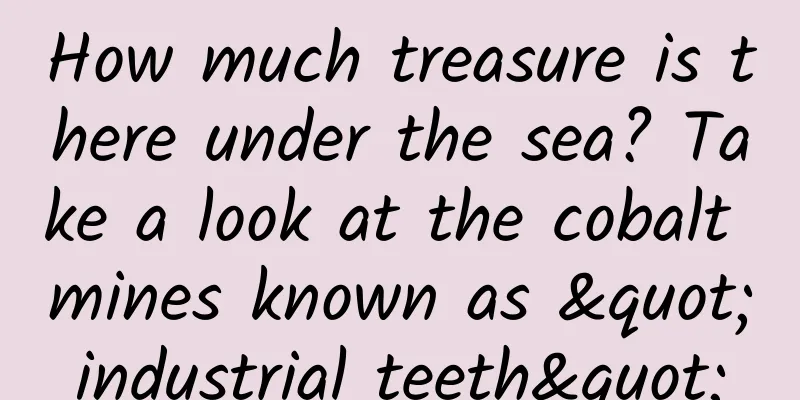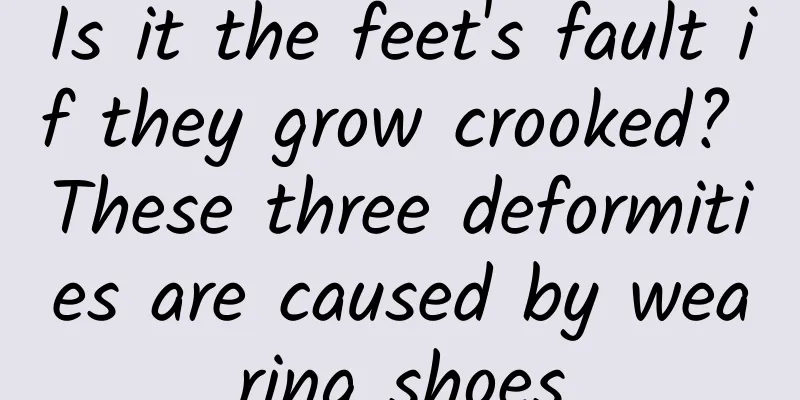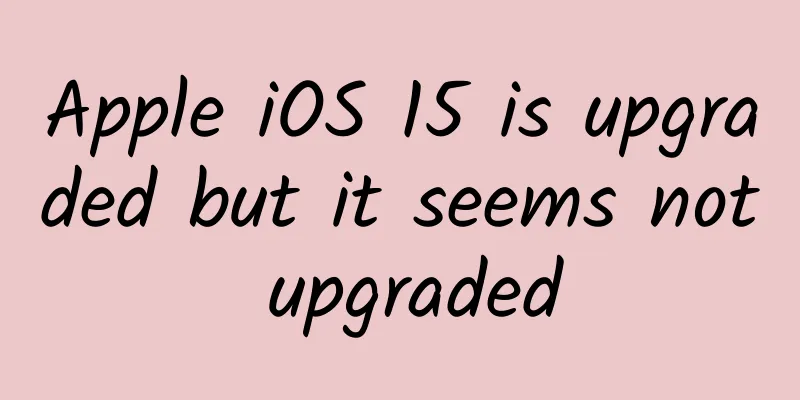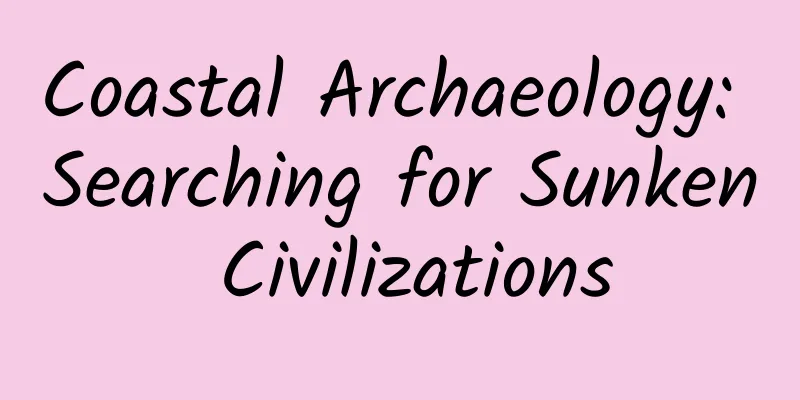How much treasure is there under the sea? Take a look at the cobalt mines known as "industrial teeth"

|
We often talk about various mineral deposits, and what come to mind are mines, caves and other land-based mineral deposits, but in fact, the seabed is the largest treasure trove of mineral resources on the earth, because the ocean accounts for 71% of the earth's surface. From this perspective, treasure hunting on the seabed in pirate stories is really the right place. "Cobalt" is a metal element. People don't know much about it, but it is an indispensable treasure in our lives today. Now let's get to know "cobalt", which is the 27th element in the periodic table, preceded by iron and followed by nickel. It has the characteristics of high hardness, wear resistance, heat resistance and corrosion resistance, and is known as the "industrial teeth". This important element must be added in the production of aviation, aerospace, weapons and medical equipment. The most closely related to our lives is that it is an indispensable participant in the production of new energy vehicle batteries, mobile phone batteries and various rechargeable batteries, just like the metal "lithium". With the popularization of green environmental protection concepts, the application of rechargeable batteries is becoming more and more extensive, and the demand for cobalt resources is becoming more and more intense. According to the forecast of relevant departments, the global demand for cobalt will reach about 220,000 tons in 2025 and about 380,000 tons in 2030, of which 80% will be used for the production of rechargeable batteries, so "cobalt" is an important strategic resource. Unfortunately, cobalt resources are very scarce on land. The world's proven reserves of cobalt ore on land are 7 million tons, 80% of which are in the Democratic Republic of the Congo, Australia, Cuba, the Philippines, and Zambia. my country only has 80,000 tons, accounting for only 1% of the global reserves. It is a very scarce resource. The picture comes from Tuchong.com In recent years, my country has achieved a leapfrogging in the field of new energy vehicles, becoming the country with the largest production of energy storage batteries and the largest consumer of "cobalt" in the world, consuming about 50,000 tons each year, of which 90% needs to be imported from abroad. At the current production and consumption rate, the cobalt resources on land will soon be exhausted. Do we have more spare resources? That’s where seabed minerals come into play. Marine geological science surveys have found that in the vast depths of the ocean, there are abundant mineral resources such as cobalt-rich crusts and polymetallic nodules. You may ask, what are these "crusts" and "nodules"? Here are two types of seabed treasures. Cobalt-rich crusts were discovered by scientists using underwater robot cameras. Many mountain ranges on the seafloor of the Pacific, Atlantic, and Indian Oceans are covered with bud-like tumors that are coal-black, light and brittle, and have a loose structure. The water depth is 400 to 5,000 meters. This thin shell-like material is generally a few millimeters to more than ten centimeters thick. Sampling analysis shows that it is an iron-manganese shell-like oxide, which contains elements such as cobalt, titanium, cerium, nickel, platinum, manganese, phosphorus, thallium, tellurium, zirconium, tungsten, bismuth and molybdenum. Due to the relatively high cobalt content, people call it cobalt-rich crust. To date, it has been quietly sleeping on the seabed for tens of millions of years. Cobalt-rich crusts are distributed on the seabed of the Pacific, Atlantic and Indian Oceans, with a cobalt content of up to 2%, which is more than 20 times the cobalt content of terrestrial primary ores. Another type of seabed treasure is polymetallic nodules, also known as manganese nodules, which are widely distributed on the surface of the ocean floor at 3,500-6,000 meters. They are dark brown and spherical or ellipsoidal ore bodies shaped like potatoes. Their surfaces are relatively smooth, and the bottom is buried in sediments, which is often rougher than the top. The diameter is generally 3-10 cm, and the diameter of the large sphere is more than 20 cm. Scientists have found through sampling and analysis that these spherical ore bodies are nuclei of iron and manganese hydroxides growing around the core body. The cross-section layer structure after cutting is very obvious. Some of the core bodies are extremely small manganese ore crystals; there are also microfossil shells, phosphated shark teeth, basalt debris, etc. The cross-section layer structure also represents their age when they grew on the seabed. They contain cobalt, copper, lead, zinc, gold and other polymetallic and rare earth elements. Polymetallic nodules are distributed on the seabeds of the Pacific Ocean, Indian Ocean and Atlantic Ocean. It is estimated that the world's ocean floor polymetallic nodule resources can reach 3 trillion tons, of which the average cobalt content in the polymetallic nodules in the eastern Pacific Ocean is 0.22%. In the eastern Pacific CC mining area alone, the estimated cobalt ore reserves are 21 billion tons, which is enough for global use for hundreds of years. Our country must certainly seize such a huge treasure. According to the relevant regulations of the United Nations "International Seabed Authority", whichever country first applies for seabed resource exploration in the high seas will have exclusive exploration rights in the seabed of the application area. After completing the prescribed resource exploration work, it can apply for priority mining rights. In accordance with the technical application procedures, relevant departments of my country organized scientists to complete marine scientific surveys and explorations in four sea areas and obtained four seabed mining areas with exclusive exploration rights and priority mining rights. They are: In 2001, the East Pacific Polymetallic Nodule Exploration Area was awarded, covering an area of 75,000 square kilometers; In 2011, the company was awarded a 10,000 square kilometer polymetallic sulfide exploration area in the southwest Indian Ocean; In 2013, the company obtained 3,000 square kilometers of exploration areas for cobalt-rich crusts and polymetallic nodules in the western Pacific Ocean; In 2014, the exploration area of cobalt-rich crusts and polymetallic nodules in the eastern Pacific Ocean was acquired, covering an area of 73,000 square kilometers. The mining area contains more than 100 million tons of cobalt, manganese, nickel, copper and other metal mineral resources. These four areas are equivalent to my country's marine territory. my country is the only country that has exclusive exploration rights and priority exploitation rights in the above-mentioned areas. They are potential treasure troves of mineral resources in my country. In recent years, my country's scientific and technological personnel have completed relevant international exploration of seabed cobalt-rich crusts and polymetallic nodules through marine geology, geophysics, and seabed robot photography. They have also conducted surveys and sampling of cobalt-rich crusts and polymetallic nodules in key areas, laying a good foundation for the exploitation of seabed resources. In recent years, Western developed countries have been exploring and researching methods of industrial mining, but no breakthroughs have been made so far. How to use robots to carry out large-scale industrial mining of seabed cobalt-rich crusts and polymetallic nodule resources is a technical challenge that we must overcome as soon as possible in the future. It is also a scientific and technological problem that requires the students present here to rely on your wisdom and talents to solve together. This article is a work supported by Science Popularization China Starry Sky Project Author: Zhou Jianxin Reviewer: Zhang Xunhua (Researcher at Qingdao Institute of Marine Geology) Produced by: China Association for Science and Technology Department of Science Popularization Producer: China Science and Technology Press Co., Ltd., Beijing Zhongke Xinghe Culture Media Co., Ltd. |
<<: World Book Day丨I know you’ve read history books, but what about “shitty books”?
>>: March into the deep sea and strive for maritime strength! Happy birthday, People's Navy!
Recommend
Can food allergies be cured by eating more often? Can probiotics treat allergic rhinitis? Don't believe these misunderstandings about allergies!
The World Health Organization has listed allergic...
Why can a ping-pong ball go into space but not be taken on an airplane?
A few days ago, Chinese astronauts in orbit actua...
9 cases and 12 methods to obtain seed users
Regarding seed users , there are several concepts...
Behind the plunge in Tesla’s stock price, is Musk planning a big game for shared cars?
Tesla, which has escaped the curse of low product...
Mars 2020 "Perseverance" rover, the technology for detecting life is very good!
[Mobile software: Bo Ke Yuan] Scientists have use...
Are left-handed people smarter? Why are there more left-handed boys? Huaxi doctors tell you the truth...
A left-handed person is the hope of the whole vil...
Is the lard used by our ancestors good or bad? If you eat it often, you must read this!
Speaking of lard, the first thing that comes to m...
Which sprouted foods can be eaten? Which can’t be eaten?
Mixed Knowledge Specially designed to cure confus...
How to use the 400 number?
At present, most of the domestic enterprises have...
How to take advantage of the hot summer season to advertise?
In the advertising market, how to seize special o...
How to place, operate and optimize Toutiao ads?
The first step in Toutiao advertising: understand...
This year's new trend! Make tassel earrings out of plants!
Recently, a plant that can be used as "tasse...
How to plan a hit event?
With the fading of traffic dividends in recent ye...
〔2021 Summer〕Senior 3 Chemistry Target A+ Jia Shizeng
〔2021 Summer〕High School Chemistry Target A+ Jia ...
Tian Jishun's "Normal Childbirth Guide, 7 Natural Childbirth Techniques, Can Be Used for One or Two Babies"
Tian Jishun's "Natural Childbirth Guide,...









